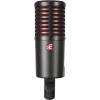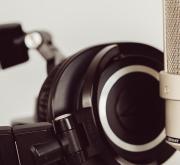Beliebte Filter: Anschluss
746 Ergebnisse entsprechen den Suchkriterien
-

Gut
1,6
SE Electronics V7 X
- Typ: Instrumentenmikrofon
- Technologie: Dynamisch
- Richtcharakteristik: Superniere
Zum Produkt
-
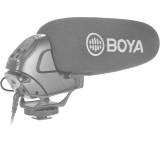
Gut
1,8
Boya BY-BM3031
- Typ: Kamera-Mikrofon, Richtmikrofon
- Technologie: Kondensator
- Richtcharakteristik: Superniere
-

Sehr gut
1,3
Rode Microphones NTK
- Typ: Instrumentenmikrofon, Gesangsmikrofon
- Technologie: Röhre
- Richtcharakteristik: Niere
Zum Produkt
-

Sehr gut
1,2
Sontronics Podcast Pro
- Typ: Podcastmikrofon
- Technologie: Dynamisch
- Richtcharakteristik: Superniere
-

Gut
2,0
Sabinetek Smartmike+
- Typ: Handy-Mikrofon, Ansteckmikrofon
- Anschluss: Klinke (3,5 mm), USB
-

Sehr gut
1,3
AKG C414 XLS
- Typ: Instrumentenmikrofon, Gesangsmikrofon
- Technologie: Kondensator
- Richtcharakteristik: Bidirektional (Acht), Breite Niere, Hyperniere, Niere, Omnidirektional (Kugel)
Zum Produkt
-
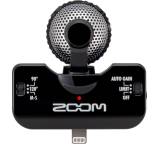
Gut
1,7
Zoom iQ5
- Typ: Handy-Mikrofon
- Technologie: Dynamisch
- Richtcharakteristik: Stereo, Bidirektional (Acht)
Zum Produkt
-
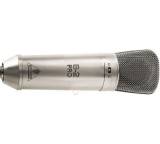
Gut
1,9
Behringer B-2 Pro
- Typ: Instrumentenmikrofon, Gesangsmikrofon
- Technologie: Kondensator
- Richtcharakteristik: Bidirektional (Acht), Niere, Omnidirektional (Kugel)
Zum Produkt
-

ohne Endnote
Yamaha YCM01U
- Typ: Podcastmikrofon, Tischmikrofon
- Technologie: Elektret, Kondensator
- Richtcharakteristik: Niere
-
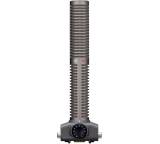
Sehr gut
1,4
Zoom SSH-6
- Typ: Kamera-Mikrofon, Richtmikrofon
- Richtcharakteristik: Stereo, Superniere, Bidirektional (Acht)
Zum Produkt
-

Sehr gut
1,2
AKG Perception Live P 4
- Typ: Instrumentenmikrofon
- Technologie: Dynamisch
- Richtcharakteristik: Niere
Zum Produkt
-

Sehr gut
1,5
Rode Microphones NT5
- Typ: Instrumentenmikrofon
- Technologie: Kondensator
- Richtcharakteristik: Stereo, Niere
Zum Produkt
-
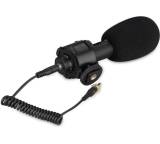
Gut
1,9
Boya BY-PVM50
- Typ: Kamera-Mikrofon, Handy-Mikrofon, Richtmikrofon
- Technologie: Kondensator
- Richtcharakteristik: Stereo
-

ohne Endnote
Tonor BM-700
- Typ: Handy-Mikrofon, Gesangsmikrofon
- Technologie: Kondensator
- Anschluss: XLR
Zum Produkt
-

Sehr gut
1,0
Electro-Voice ND46
- Typ: Instrumentenmikrofon
- Technologie: Dynamisch
- Richtcharakteristik: Superniere
Zum Produkt
-

Gut
1,9
Rode Microphones SC6-L
- Typ: Handy-Mikrofon, Ansteckmikrofon
- Technologie: Kondensator
- Richtcharakteristik: Omnidirektional (Kugel)
-

Sehr gut
1,5
Comica VM30
- Typ: Kamera-Mikrofon, Richtmikrofon
- Technologie: Kondensator
- Richtcharakteristik: Superniere
-

Gut
1,8
AKG Perception 170
- Typ: Instrumentenmikrofon
- Technologie: Kondensator
- Anschluss: XLR
Zum Produkt
-

Gut
1,8
AKG Perception Live P 3 S
- Typ: Gesangsmikrofon
- Technologie: Dynamisch
- Richtcharakteristik: Niere
Zum Produkt
-
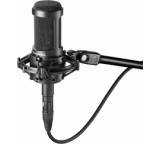
Gut
1,8
Audio-Technica AT 2050
- Typ: Instrumentenmikrofon, Gesangsmikrofon
- Technologie: Kondensator
- Richtcharakteristik: Bidirektional (Acht), Niere, Omnidirektional (Kugel)
Zum Produkt
-
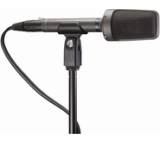
Sehr gut
1,1
Audio-Technica AT8022
- Typ: Kamera-Mikrofon, Reportermikrofon, Instrumentenmikrofon, Gesangsmikrofon
- Technologie: Kondensator
- Richtcharakteristik: Stereo, Niere
Zum Produkt
-

Gut
1,7
AKG Perception Live P 5
- Typ: Gesangsmikrofon
- Technologie: Dynamisch
- Richtcharakteristik: Superniere
Zum Produkt
-
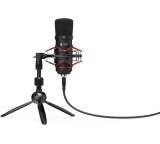
Sehr gut
1,0
SPC Gear SM900T
- Typ: Podcastmikrofon, Tischmikrofon
- Technologie: Kondensator
- Richtcharakteristik: Niere
-

Gut
1,9
Shure Motiv MVL
- Typ: Handy-Mikrofon, Ansteckmikrofon
- Technologie: Kondensator
- Richtcharakteristik: Omnidirektional (Kugel)
Zum Produkt
-

Sehr gut
1,0
Lewitt LCT 640 TS
- Typ: Instrumentenmikrofon, Gesangsmikrofon
- Technologie: Kondensator
- Richtcharakteristik: Superniere, Bidirektional (Acht), Breite Niere, Niere, Omnidirektional (Kugel)
Zum Produkt
-
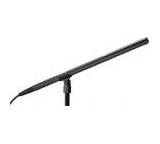
Sehr gut
1,5
Beyerdynamic MCE 86 S II CAM
- Typ: Kamera-Mikrofon, Richtmikrofon
- Technologie: Elektret, Kondensator
- Richtcharakteristik: Direktional (Keule), Hyperniere
Zum Produkt
-
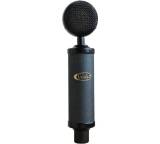
Sehr gut
1,3
Violet Design The Maestro
- Typ: Gesangsmikrofon
- Technologie: Kondensator
- Richtcharakteristik: Niere
Zum Produkt
-
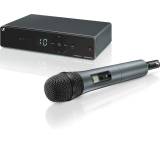
ohne Endnote
Sennheiser XSW1-835-E
- Typ: Funkmikrofon, Gesangsmikrofon
- Technologie: Dynamisch
- Richtcharakteristik: Niere
Zum Produkt
-

Gut
1,7
Audio-Technica AT2020USBi
- Typ: Podcastmikrofon, Tischmikrofon
- Technologie: Kondensator
- Richtcharakteristik: Niere
Zum Produkt
-

Sehr gut
1,0
DPA Microphones d:vote Core 4099
- Typ: Instrumentenmikrofon
- Technologie: Kondensator
- Richtcharakteristik: Superniere
-

Sehr gut
1,3
SPC Gear SM950
- Typ: Podcastmikrofon
- Technologie: Kondensator
- Richtcharakteristik: Niere
-

Gut
1,8
Streamplify Mic Tripod
- Typ: Podcastmikrofon, Tischmikrofon
- Technologie: Kondensator
- Richtcharakteristik: Niere
-

Gut
2,0
Mackie Creator Bundle
- Typ: Podcastmikrofon, Tischmikrofon
- Technologie: Kondensator
- Richtcharakteristik: Niere
-

Gut
1,9
Saramonic SR-MV 2000
- Typ: Podcastmikrofon, Tischmikrofon
- Technologie: Kondensator
- Richtcharakteristik: Niere
-

Sehr gut
1,2
Saramonic SoundBird T3
- Typ: Kamera-Mikrofon, Richtmikrofon
- Richtcharakteristik: Niere
- Anschluss: XLR
-
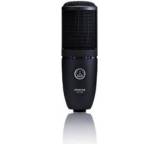
Gut
1,6
AKG Perception 120 USB
- Typ: Gesangsmikrofon
- Technologie: Kondensator
- Richtcharakteristik: Stereo, Niere
Zum Produkt
-
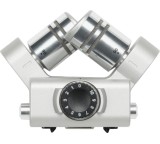
ohne Endnote
Zoom XYH-6 X/Y Capsule
- Richtcharakteristik: Stereo, Niere
- Anschluss: Klinke (3,5 mm)
Zum Produkt
-

Sehr gut
1,0
Beyerdynamic TG D35d
- Typ: Instrumentenmikrofon
- Technologie: Dynamisch
- Richtcharakteristik: Superniere
Zum Produkt






